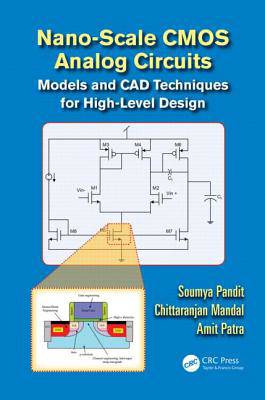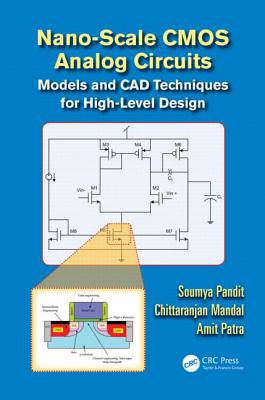
- Afhalen na 1 uur in een winkel met voorraad
- Gratis thuislevering in België vanaf € 30
- Ruim aanbod met 7 miljoen producten
- Afhalen na 1 uur in een winkel met voorraad
- Gratis thuislevering in België vanaf € 30
- Ruim aanbod met 7 miljoen producten
Nano-Scale CMOS Analog Circuits
Models and CAD Techniques for High-Level Design
Soumya Pandit, Chittaranjan Mandal, Amit PatraOmschrijving
Reliability concerns and the limitations of process technology can sometimes restrict the innovation process involved in designing nano-scale analog circuits. The success of nano-scale analog circuit design requires repeat experimentation, correct analysis of the device physics, process technology, and adequate use of the knowledge database.
Starting with the basics, Nano-Scale CMOS Analog Circuits: Models and CAD Techniques for High-Level Design introduces the essential fundamental concepts for designing analog circuits with optimal performances. This book explains the links between the physics and technology of scaled MOS transistors and the design and simulation of nano-scale analog circuits. It also explores the development of structured computer-aided design (CAD) techniques for architecture-level and circuit-level design of analog circuits.
The book outlines the general trends of technology scaling with respect to device geometry, process parameters, and supply voltage. It describes models and optimization techniques, as well as the compact modeling of scaled MOS transistors for VLSI circuit simulation.
- Includes two learning-based methods: the artificial neural network (ANN) and the least-squares support vector machine (LS-SVM) method
- Provides case studies demonstrating the practical use of these two methods
- Explores circuit sizing and specification translation tasks
- Introduces the particle swarm optimization technique and provides examples of sizing analog circuits
- Discusses the advanced effects of scaled MOS transistors like narrow width effects, and vertical and lateral channel engineering
Nano-Scale CMOS Analog Circuits: Models and CAD Techniques for High-Level Design
Specificaties
Betrokkenen
- Auteur(s):
- Uitgeverij:
Inhoud
- Aantal bladzijden:
- 408
- Taal:
- Engels
Eigenschappen
- Productcode (EAN):
- 9781466564268
- Verschijningsdatum:
- 20/02/2014
- Uitvoering:
- Hardcover
- Formaat:
- Genaaid
- Afmetingen:
- 163 mm x 234 mm
- Gewicht:
- 680 g

Alleen bij Standaard Boekhandel
Beoordelingen
We publiceren alleen reviews die voldoen aan de voorwaarden voor reviews. Bekijk onze voorwaarden voor reviews.











